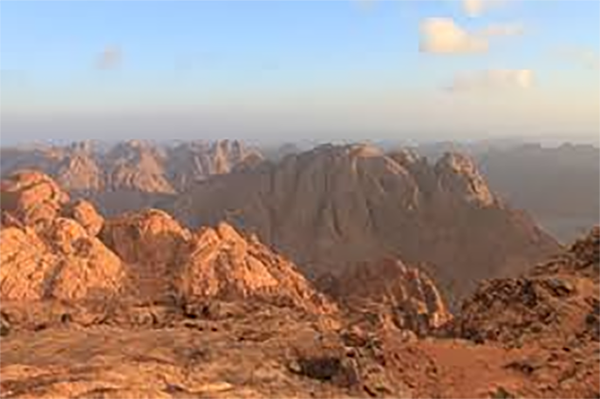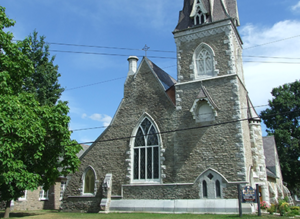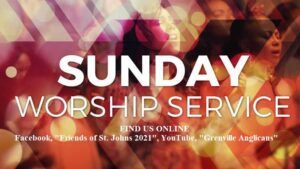Psalm 125 2018 – Thoughts on How God Meets Us
Our faith tells us that God is above us and beyond us.
We believe that God created the vast universe,
and that he governs the events of our lives and of history.
And so God is really beyond our capacity to know.
If we are to live lives that have God in them,
we need God to make himself known to us “down here”,
because he is beyond us as he is “up there.”
We need ways to be connected with him.
One way of saying this is that we need ways that mediate between God’s awesomeness and our human limitations.
For the Israelites in ancient times, the Temple was the place “down here”
where they found God.
Our psalm for this Sunday begins like this:
“Those who trust in the Lord are like Mount Zion,
which cannot be moved, but stands fast forever.”
Now Mount Zion is the tall rocky hill that Jerusalem is built around.
It isn’t really what we would call a mountain, like the Rocky Mountains.
And when the Bible talks about Mount Zion,
it is usually talking about the Temple which sat on Mount Zion.
“Mount Zion” is a way of speaking about Jerusalem and the Temple within Jerusalem.
Mount Zion is a very powerful symbol in the Bible and we still use it.
Our last hymn is going to be “Glorious things of thee are spoken, Zion city of our God.”
When the Israelites looked at the massive stone Temple,
sitting on the rock of Mount Zion,
they thought of God’s unshakeable presence with them.
“Those who trust in the Lord are like Mount Zion,
which cannot be moved, but stands fast forever.”
As well, Mount Zion is a tall hill, but it is surrounded by even taller hills.
One of them is the Mount of Olives, which Jesus rode down on Palm Sunday.
Another is Mount Scopus, and Tracey actually stayed on Mount Scopus when she was visiting Jerusalem.
That’s where the campus of Hebrew University is and she stayed in the university residence.
So the Temple was not only built on this high rocky hill but it was surrounded by even higher rocky hills.
The psalm says, “The hills stand about Jerusalem; so does the Lord stand about his people, from this time forth for evermore.”
The people of Israel lived a risky and uncertain existence,
but the Temple on Mount Zion seemed unchanging and unshakeable,
and it stood for God’s presence, which was unchanging and unshakeable.
He surrounded them and would always surround them.
And that was true even when they turned away from him.
On the journey of Israel through the wilderness,
they often doubted whether God would provide for them,
but he never failed them.
Even when they turned away from him,
as when they worshipped the golden calf,
he disciplined them but he still held onto them as his people.
Often when people talk about their faith journey,
they say something like this about a period of their life.
“I knew God was there, but I just wasn’t ready to do anything about it.
I believed in him but there were so many other things and God just wasn’t a priority.”
So God has been there all along,
but now they want to respond to him.
Sometimes the first step seems like a small one.
We knew a family who were very active in their faith in God,
and they said that the first step for them was just saying grace at mealtimes.
Simply saying grace led to more.
Sometimes it is only looking back that we can see that God was there at all.
Most of you are probably familiar with the meditation called Footprints.
I won’t repeat it in detail, but the presence of God was seen as a set of footprints, accompanying the person’s footprints in the sand along a beach.
Looking back at the most difficult parts of the person’s life, there were only one set of footprints and the person asks,
“Lord, why weren’t you there in those difficult times?”
And the Lord replies that the single set of footprints were his.
At those times he was carrying the person without them knowing it.
That’s a very popular meditation and it’s also very true to the Bible.
You remember how in the chaos of the passion and crucifixion,
Peter denied Jesus three times.
At that terrible time, he must have felt that he was all alone,
and that he had no choice but to protect himself.
He must have felt that at that moment, God was not there for him.
He had forgotten that just hours before, Jesus had prayed for him:
“Simon, Simon, behold, Satan demanded to have you, that he might sift you like wheat, but I have prayed for you that your faith may not fail. And when you have turned again, strengthen your brothers.” (Luke 22:31-32)
And that’s how it turned out.
Peter’s faith ultimately did not fail, and he was a source of strength to the church around him.
God was with him, even at that low point when he wasn’t with God.
And perhaps years later, he could see that God had held onto him,
even though he couldn’t see it at the time.
The Temple, standing on the rock of Mount Zion,
was the place where Israel placed their trust in the unchanging protection of God.
“Those who trust in the Lord are like Mount Zion,
which cannot be moved, but stands fast forever.
The hills stand about Jerusalem; so does the Lord stand about his people, from this time forth for evermore.”
No doubt the people of that time thought that the physical Temple on Mount Zion would always be there.
If God was present in the Temple, what could ever touch it?
But in fact, the physical Temple did not last forever.
It was demolished twice – first by the Babylonians.
Then after Israel’s time of exile it was rebuilt.
The second time it was destroyed by the Romans,
and it was never rebuilt.
This tells us that the physical Temple was a sign of the unchanging God,
but it was only a sign.
God is unchanging, but the places he makes himself known “down here” do change.
For Christian faith, all the unchanging presence and protection that were there in the Temple,
pointed to a closer, greater presence in Jesus Christ.
We believe that that meeting place that we need between God and ourselves,
that mediation that connects us to God,
is there in Jesus, the true Mediator between God and humanity.
As they looked at the Temple, so we look at Jesus.
And because of him there are also many more ways that God meets us “down here” in his body, the church – in worship, in the sacraments, in our fellowship.
As St. Paul said to the church at Corinth, “Do you not know that you are God’s temple and that God’s Spirit dwells in you?”
“For we are the temple of the living God, as God said,
“I will make my dwelling among them and walk among them,
and I will be their God, and they shall be my people.”
That might sound very grand and perhaps we might wonder whether we can live up to it.
Usually the ways in which God meets us down here are pretty simple.
And yet the promise is there for us as well:
“The hills stand about Jerusalem;
so does the Lord stand round about his people,
from this time forth for evermore.”
The God who met Israel in the Temple,
meets us in Jesus.
And for that we give God our thanks and our praise!




